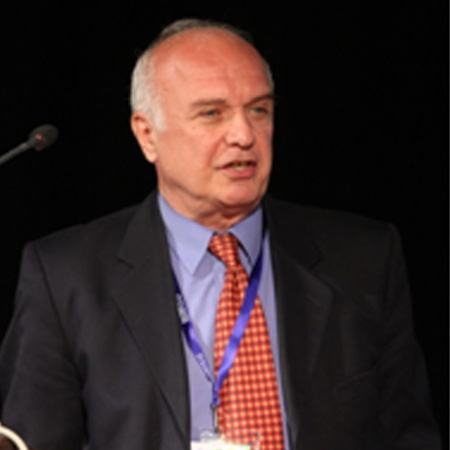
Professor
Information Science, Quantum Computing
Molecular Physics Georgian Technical University
University Georgian, USA
E-mail: kervalpt@yahoo.com

Information Science, Quantum Computing
Molecular Physics Georgian Technical University
University Georgian, USA
E-mail: kervalpt@yahoo.com
| 1980-1984 | Ph.D, Physics and Mathematics, I. Kurchatov Institute of Atomic Energy Moscow, Russia |
| 1974-1979 | B.Sc, M.S, Institute "GIREDMET", Moscow,Institute of Foreign Languages |
Professor, Doctor of Sciences and Dr.-Eng. Paata J. Kervalishvili (born - 1949) is Professor at department of Physics within Georgian Technical University, as well as Professor of faculty of exact and natural sciences of Tbilisi State University.
From 1970 until 1992 Prof. Kervalishvili was researcher and Director in different research and technology centers within the Middle Machinery Ministry (State Committee for Atomic Energy) of former USSR main body of the Soviet atomic energy and weapon industry (Institute of Stable Isotopes, The Soviet State institute of Rare Metals, Sukhumi Physical-Technical Institute, I. Kurchatov Institute of Atomic Energy) In 1994 – 1999, after one year in Parliament of Georgia he worked in Government of Georgia (as Secretary of State in the State Committee for Science and Technology, Assistant to President of the State in Science and Technology)A condensed matter physicist with Technical University Diploma, Dr. Kervalishvili has served in several directions of physics and technology such as: condensed matter, molecular and quantum physics, nuclear and laser technologies, novel materials, sensory systems, energy and information technologies. He is author of more than 450 scientific publications, books, manuals, and inventions and among them scientific bestsellers published by IOS Press, Pergamon Press, Springer.
Prof. Kervalishvili is a member of more than 10 top level academies and research councils and among them: full member of American, European, Russian and Georgian scientific academies, Georgian Engineering academy and other distinguish organizations. Currently he is the President of Georgian Academy of Natural Sciences and President of Euro Mediterranean Academy of Arts and Sciences.
Dr. Kervalishvili received more than 20 prestigious prizes and state orders and among them USSR, Georgia, Germany, Italy, different public organizations, scientific academies and universities (USA, Greece, Russia, Turkey, Romania, etc.)
As a Director and coordinator of several (more than 90) World Bank, EU, ISTC, etc. projects and Chairman of International Forums and Conferences (more than 60), as well as Professor of some well known European and American Universities he has the wide international experience.
P. Kervalishvili received his B.S. and M.S. in engineering physics from Georgian Technical University. The Soviet State institute of Rare Metals awarded him the title of Ph. D., and Dr.-Eng. in 1979, and Soviet atomic centre “Kurchatov Institute” – degree of Doctor of physics and mathematics (1985). He got USSR Professor State title in 1989.
Quantum physics, Sensory systems, Condensed matter

All Sci Forschen Journals are Open Access